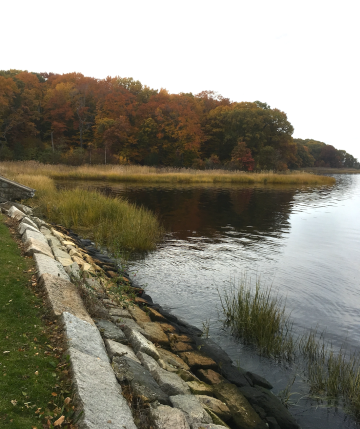Our Environment: “Breeding Ground of the Great-Crested Flycatcher” By Scott Turner
Sunday, December 09, 2018
Most late afternoons, Karen and I walk Woody, our dog, along the Seekonk River and woods of Blackstone Park in Providence.
Yesterday, while bundling up for that stroll in the cold and dark, I thought about what was no longer around the landscape this time of year, besides sunlight and warmth.
Take, for example, the Great-crested Flycatcher, a bird that bred in the park last spring and summer. The Cornell Laboratory of Ornithology describes the species as, “a large, assertive flycatcher with rich reddish-brown accents and a lemon-yellow belly…”
GET THE LATEST BREAKING NEWS HERE -- SIGN UP FOR GOLOCAL FREE DAILY EBLASTYou don’t need to see a Great-crested Flycatcher to know it’s around. The bird’s diagnostic call typically floats out of the forest. The Cornell Lab describes it as a, “loud, penetrating whee-eep whistle that rises quickly and ends abruptly.” To me the call sounds like laughter.
If the Great-crested Flycatcher, which migrates in late summer, made it safely to wintering grounds, then the bird is currently somewhere between Central Florida and northwestern South America.
Below the wooded ridge where the flycatcher bred is a pond, where a big snapping turtle, its shell covered in algae and mud, surfaced every so often last summer.
Unlike migratory birds, a snapping turtle stays put year-round. In winter, “sometimes you can see snappers and other species moving around under the ice,” notes North Country Public Radio. “While their metabolism runs at very low ebb in the cold, they remain alert to changes in light and temperature that signal the coming spring.”
Listening for the flycatcher last summer we shared space under a streetlamp with a bat that swooped for insects. Because the winged mammal was relatively small, I figured it was a little brown bat.
Year-round, little brown bats roost together. In winter, colonies of the bats hibernate in caves and mines, where it’s cold and humid. Some bats travel hundreds of miles, sometimes even flying north, to find a cave or mine to overwinter.
By the way, any little brown bat sighting is a sign of good fortune, as the mammals are vanishing due to white-nose syndrome, a fungal disease that hits them during hibernation.
Like the Great-crested flycatcher, a little brown bat eats insects. And one of the most visible bugs at Blackstone Park last summer was the common green darner, which is a dragonfly that also migrates. In autumn, the common green darner heads south with members of its own species and with other types of dragonflies, often in swarms, and sometimes to locales as far south as Mexico and Central America.
On these late afternoons in December, Karen and I trundle through the park in bundles of down and wool, remembering our neighbors—the creatures of spring, summer and fall.
Now, a squirrel sometimes rustles the leaves, a rabbit dashes into a thicket, or an overwintering bird squawks. Mostly, however, it’s just quiet and still.
The harsh realities of winter hammer home that time rolls along, the earth keeps turning, and that it won’t be until springtime that we and our full complement neighbors will meet again.
Scott Turner is a Providence-based writer and communications professional. For more than a decade he wrote for the Providence Journal and we welcome him to GoLocalProv.com.
Related Articles
- Our Environment: Fall Fruit and Vegetables in New England, by Scott Turner
- Our Environment: “Sharp, Explosive, Chink” by Scott Turner
- Our Environment: “Psithurism” By Scott Turner
- Our Environment: “A Morning Search for Evening Grosbeaks,” By Scott Turner





